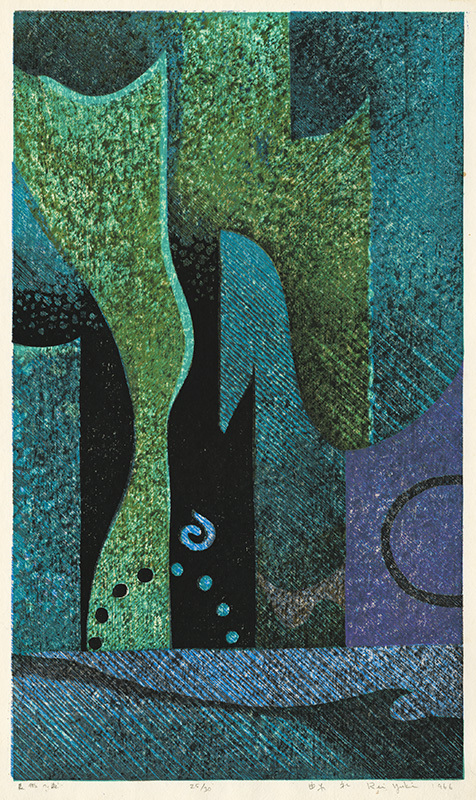
19th, 20th & 21st Century Fine Prints
707-546-7352 · fax 707-546-7924 · web: www.annexgalleries.com · email: artannex@aol.com
Forest of Symbols by Rei Yuki

Forest of Symbols
Rei Yuki
Forest of Symbols
Rei Yuki
1928 - 2003 (biography)A serene, fantastical composition, Rei Yuki's abstraction is made up of a harmonious patchwork of blues and greens that suggest an underwater world as much as a forest. Yuki layers textured shadows over the fields of color, lending them a grounding dimensionality.
Modern Japanese print historian Francis Blakemore summarized Yuki's woodcuts thusly, "These airy, generous prints are delicate fantasies, scenes of a landscape that can exist only in the imagination... The works are light, yet the source of the light is hidden ... It is a light defined by shadows, creating a mood of timeless suspension... subdued coloration and shading; and magical, waving forms together create a locus, a place that is both definite and infinite...".
Rei Yuki, also known as Gan Rei, had been a student at the French language grade school and was later a pupil of Takumi Shinagawa, a noted Japanese mid-century Abstract artist. These experiences exposed him to Western genres and he primarily pursued abstraction throughout his own career. However, he was a traditionalist in terms of technique, using the baren almost exclusively to print his woodcuts. In the 1990s he invented a ball-bearing baren to alleviate the chances of obtaining bursitis of the wrist, as was common for printmakers over prolonged periods of hand-rubbing the paper on the block.
Rei Yuki is the co-author of "Japanese Print Making - A Handbook of Traditional & Modern Techniques," an excellent book about color woodcut printmaking written together with Toshi Yoshida.


